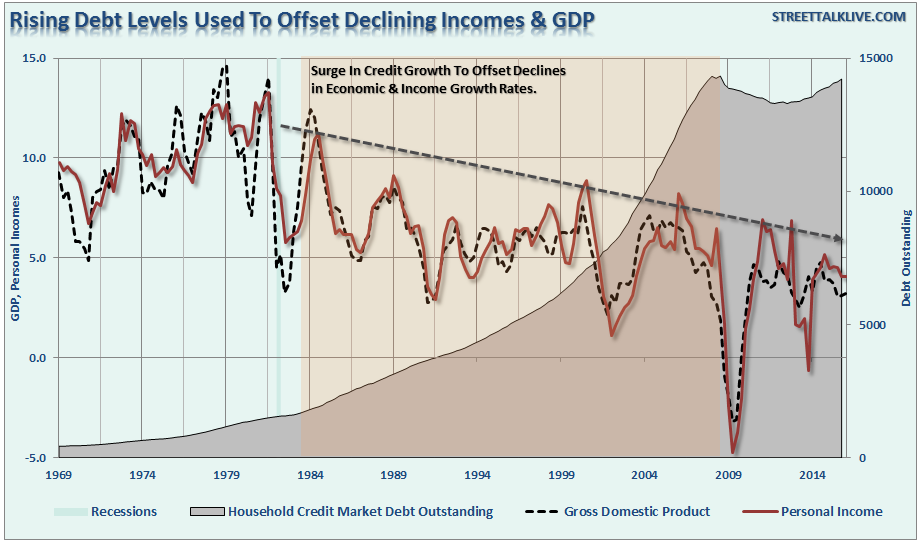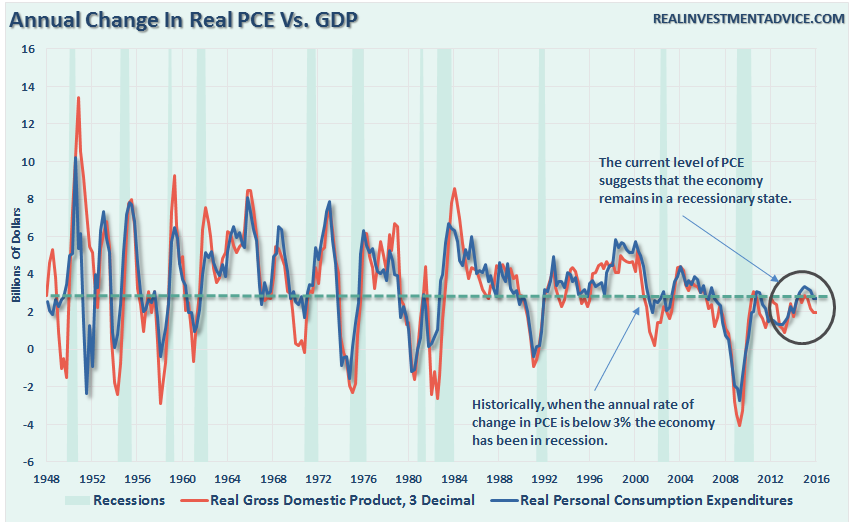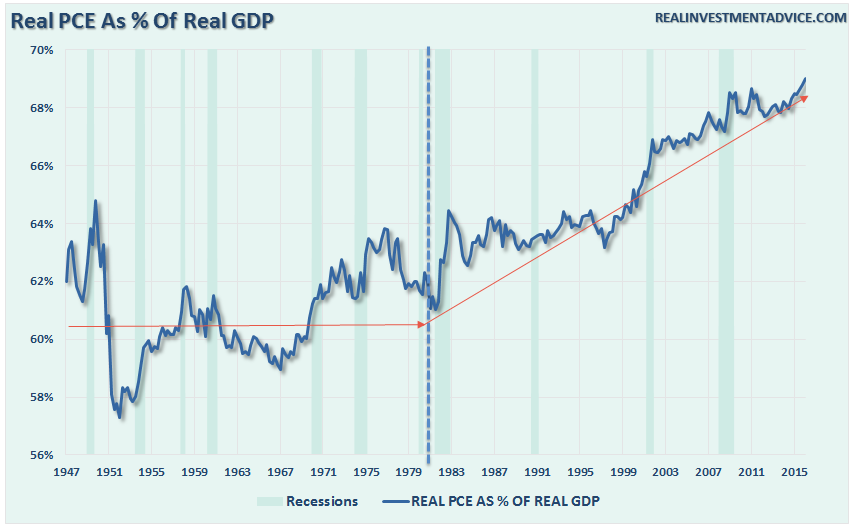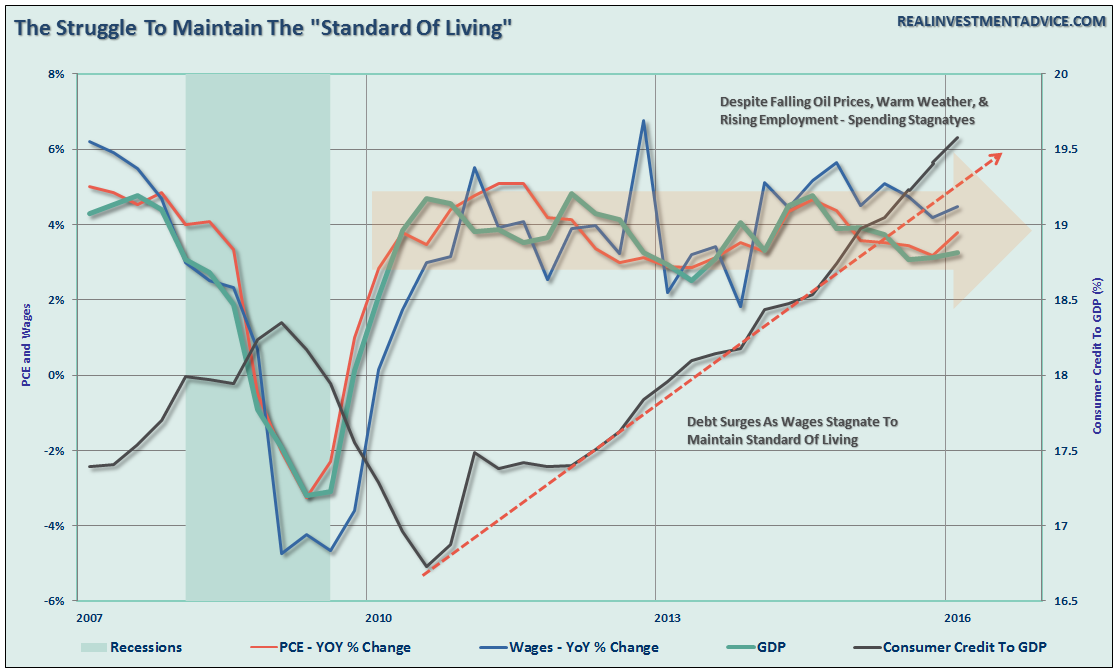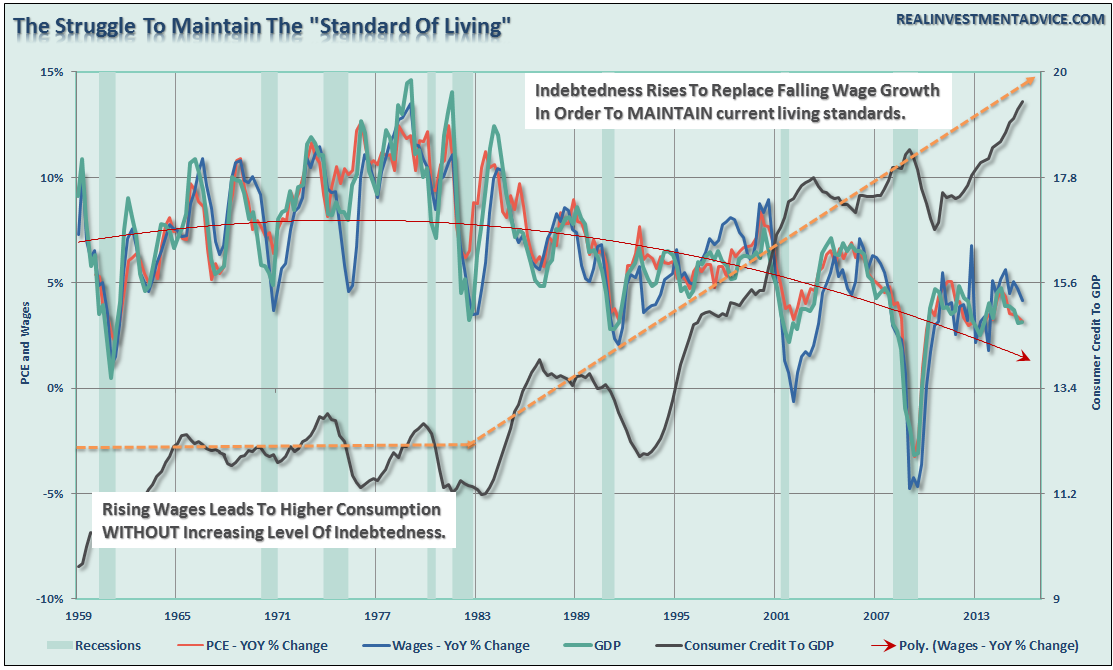Over the weekend, Sam Fleming with the Financial Times interviewed Boston Fed President Eric Rosengren about why the Fed is likely to tighten monetary policy sooner rather than later.
The reason they should believe this time is different is that the economic conditions are changing over this period. If you go back to February there was a lot of financial market turbulence. The first quarter ended up being quite weak. Real GDP for the first quarter, at least from the preliminary report, was only half a per cent. You don’t need to tighten if the economy is weak and you are concerned about global market conditions potentially making it weaker.
If instead you are in an environment where you think labor markets are tightening, that GDP is improving and inflation is moving to 2 per cent that is an environment where more normalized interest rates would make sense.
Given that real GDP was only a half a per cent in the first quarter that is a relatively low threshold. If you look at how the data has actually been coming in I was a little surprised that there was not more of a market reaction to the very strong retail sales for April. If you look at the economic forecasters in the private sector most of them have raised their consumption forecasts for the second quarter to be in the range of 3 per cent to 3.5 per cent. When consumption is roughly two-thirds of GDP, a number that high for that major a component means that it is likely we will see growth around 2 per cent.
Here is the problem, the hope of higher personal consumption and stronger GDP has been the ever-evolving “wish” of the Federal Reserve since the “financial crisis.” Of course with each passing year, these “hopes” have turned to dust as consumers have struggled to make ends meet as wages have failed to grow, employment has been in primarily lower wage-paying jobs,
The rise of the consumer society is a crucial point that continues to be missed in the ongoing arguments that try to explain the inability of the economy to achieve lift off. Let me explain.
In any economy, there is a crucial link between production and consumption. In order for consumption to occur, production must come first. Simply, an individual has to go to work and produce something, which can be consumed by others, in order to receive wages that allows for personal consumption. In turn, economic activity can be directly traced by personal consumption expenditures as shown in the chart below.
This is not surprising in an economy that is nearly 70% (69.02% to be exact) driven by personal consumption expenditures.
What is important to notice is that while real PCE as a percentage of GDP has risen sharply since 1980, it has been a function of increasing debt levels and weaker economic growth rates as shown in the first chart above. However, let’s look at this a bit differently.
From 1980 through 2000 total inflation adjusted household debt grew from $3.8 Trillion to $8.95 Trillion. At the same time, PCE as a percentage of real GDP grew from 62% to 65.17%. In other words, it took $5.054 Trillion in debt to generate 3.17% increase in the PCE/GDP ratio.
However, from 2000 through 2007, the PCE/GDP ratio expanded from 65.17% to 67.84%. This 2.67% increase required an expansion of $6.46 Trillion in debt. Not surprisingly, when households are already laden with debt, there becomes a diminishing rate of return on debt growth.
Given the lack of income growth and rising costs of living, it is unlikely that Americans can continue to consume at ever higher levels. This is particularly the case given the inability for consumers to “save” as shown by repeated studies.
Yes, I know, the savings rate is going up, but I highly suspect the savings rate calculation is flawed. As I discussed previously:
I know suggesting such a thing is ridiculous. However, the BEA calculates the saving rate as the difference between incomes and outlays as measured by their own assumptions for interest rates on debt, inflationary pressures on a presumed basket of goods and services and taxes. What it does not measure is what individuals are actually putting into a bank saving or investment account. In other words, the savings rate is an estimate of what is “likely” to be saved each month.
However, as has repeatedly been the case, consumers have continued to fall short of expectations as the difference between disposable incomes and costs of living has been reflected by increases in consumer credit.
As shown above, consumer credit as a percentage of GDP has risen a low of 16.75% following the financial crisis to almost 20% currently. This increase in debt did not result in a surge in economic growth as much of that spending was not the consumption of “more” stuff, but rather the same amount required to sustain the current standard of living. The longer wage growth continues to stagnate, the dependency on credit to support the current standard of living will continue to rise.
The problem of surging debt, as it relates to economic prosperity is clearly shown below.
What was the difference between pre-1980 and post-1980?
From 1950-1980, the economy grew at an annualized rate of 7.70%. This was accomplished with a total credit market debt to GDP ratio of less 150%.
The CRITICAL factor to note is economic growth was trending higher during this span going from roughly 5% to a peak of nearly 15%. There were a couple of reasons for this. First, lower levels of debt allowed for personal savings to remain robust which fueled productive investment in the economy. Secondly, the economy was focused primarily on production and manufacturing which has a high multiplier effect on the economy. This feat of growth also occurred in the face of steadily rising interest rates which peaked with economic expansion in 1980.
The obvious problem is the ongoing decline in economic growth over the past 35 years has kept the average American struggling to maintain their standard of living. As wage growth stagnates or declines, consumers are forced to turn to credit to fill the gap in maintaining their current standard of living. However, as more leverage is taken on, the more dollars are diverted from consumption to debt service thereby weighing on stronger rates of economic growth.
Unfortunately, for Mr. Rosengren, since the average American was never allowed to actually deleverage following the financial crisis, and still living well beyond their means, economic growth will remain mired at lower levels as savings continue to be diverted from productive investment into debt service. The issue, of course, is not just a central theme to the U.S. but to the global economy as well. After seven years of excessive monetary interventions, global debt levels have yet to be resolved.
If the Fed does proceed in hiking rates in the current environment, it will likely be a “policy error” which will be regretted in the not too distant future as debt service costs rise thereby further reducing consumers ability to “consume.”

